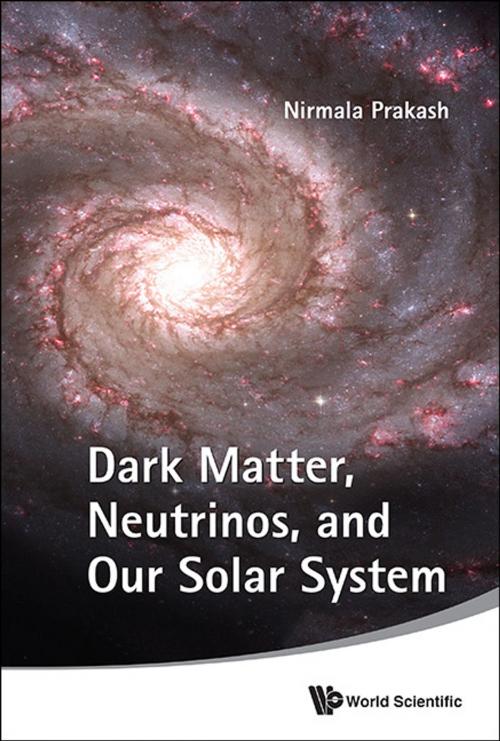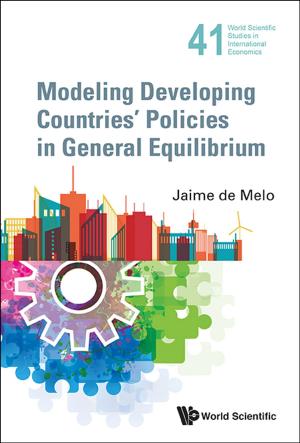Dark Matter, Neutrinos, and Our Solar System
Nonfiction, Science & Nature, Science, Physics, Astronomy, Astrophysics & Space Science| Author: | Nirmala Prakash | ISBN: | 9789814449205 |
| Publisher: | World Scientific Publishing Company | Publication: | October 31, 2012 |
| Imprint: | WSPC | Language: | English |
| Author: | Nirmala Prakash |
| ISBN: | 9789814449205 |
| Publisher: | World Scientific Publishing Company |
| Publication: | October 31, 2012 |
| Imprint: | WSPC |
| Language: | English |
Dark Matter, Neutrinos, and Our Solar System is a unique enterprise that should be viewed as an important contribution to our understanding of dark matter, neutrinos and the solar system. It describes these issues in terms of links, between cosmology, particle and nuclear physics, as well as between cosmology, atmospheric and terrestrial physics. It studies the constituents of dark matter (classified as hot warm and cold) first in terms of their individual structures (baryonic and non-baryonic, massive and non-massive, interacting and non-interacting) and second, in terms of facilities available to detect these structures (large and small). Neutrinos (an important component of dark matter) are treated as a separate entity. A detailed study of these elusive (sub-atomic) particles is done, from the year 1913 when they were found as byproducts of beta decay — until the discovery in 2007 which confirmed that neutrino flavors were not more than three (as speculated by some).
The last chapter of the book details the real-time stories about the “regions” that were not explored thus far, for lack of advanced technology. Their untold fascinating stories (which span up to 2010) are illustrated here datewise in full.
The book concludes with the latest news that the Large Hadron Collider team at CERN has finally succeeded in producing 7 trillion electronic Volts of energy by creating head-on-collisions of protons and more protons (in search of God-particle). The energy produced was three times more than previous records.
Foreword
Foreword (48 KB)
Contents:
- The Advent of Dark Matter: Galaxies, Clusters, Planet Formation, and Comet Collision
- Stars of Poor Visibility and the Methods to Track Them
- Models in Cosmology, the Luminosity of a Star, White Dwarfs and Neutron Stars
- Black Holes: The Stars with no Shine
- Particles We Encounter (A Historical Overview)
- Dark Matter and Dark Energy (A Peep into the Deep): Some Questions and Answers
- Neutrino — The Puzzle and the Power
- Detection of Lightest Supersymmetric Particles (LSPs) in Dark Matter, and the Search for WIMPs
- The Years 2004–2010: A Boom for Planetary Scientists
Readership: Graduate students, researchers and all readers interested in cosmology and astrophysics.
Key Features:
- An updated account of the evolutionary solar system and the universe at large
Dark Matter, Neutrinos, and Our Solar System is a unique enterprise that should be viewed as an important contribution to our understanding of dark matter, neutrinos and the solar system. It describes these issues in terms of links, between cosmology, particle and nuclear physics, as well as between cosmology, atmospheric and terrestrial physics. It studies the constituents of dark matter (classified as hot warm and cold) first in terms of their individual structures (baryonic and non-baryonic, massive and non-massive, interacting and non-interacting) and second, in terms of facilities available to detect these structures (large and small). Neutrinos (an important component of dark matter) are treated as a separate entity. A detailed study of these elusive (sub-atomic) particles is done, from the year 1913 when they were found as byproducts of beta decay — until the discovery in 2007 which confirmed that neutrino flavors were not more than three (as speculated by some).
The last chapter of the book details the real-time stories about the “regions” that were not explored thus far, for lack of advanced technology. Their untold fascinating stories (which span up to 2010) are illustrated here datewise in full.
The book concludes with the latest news that the Large Hadron Collider team at CERN has finally succeeded in producing 7 trillion electronic Volts of energy by creating head-on-collisions of protons and more protons (in search of God-particle). The energy produced was three times more than previous records.
Foreword
Foreword (48 KB)
Contents:
- The Advent of Dark Matter: Galaxies, Clusters, Planet Formation, and Comet Collision
- Stars of Poor Visibility and the Methods to Track Them
- Models in Cosmology, the Luminosity of a Star, White Dwarfs and Neutron Stars
- Black Holes: The Stars with no Shine
- Particles We Encounter (A Historical Overview)
- Dark Matter and Dark Energy (A Peep into the Deep): Some Questions and Answers
- Neutrino — The Puzzle and the Power
- Detection of Lightest Supersymmetric Particles (LSPs) in Dark Matter, and the Search for WIMPs
- The Years 2004–2010: A Boom for Planetary Scientists
Readership: Graduate students, researchers and all readers interested in cosmology and astrophysics.
Key Features:
- An updated account of the evolutionary solar system and the universe at large















